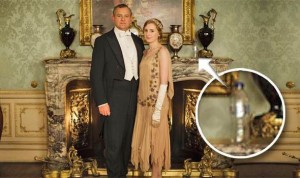Tom King’s lifelong career in CRM has obviously led to great cynicism about the system in place to protect our national heritage (understatement of the century.) This perspective colors this text throughout, where he makes the groundshattering claim from the beginning that the entire system of bureacratic natural and cultural resource protection is in fact a sham. He is intentional in this claim, trying to explode readers’ perceptions of CRM, especially since most of his readers are interested or work in heritage management. While it is dismaying that all of the extensive regulations, policies, and agencies in place in King’s view are essentially accomplishing project proponents’ goals rather than actual CRM, I do trust where King is coming from, based on his extensive experiences as a consultant, working with different agencies, and his concern for the actual protection of resources. For these reasons, while I can very easily see where this could be a depressing read for those interested in entering CRM, I was very interested in seeing what King had to say, and what changes he suggested. Having read King before, I did enter with expectations of lengthy example cases, but I was dismayed that the bulk of the text was devoted to case examples with only the last chapter dedicated to possible solutions (many of which he admitted were near impossible, i.e. constitutional amendments). Now that I think about it, I think we were forewarned about this…
For me, the most disappointing part of the whole system that King described is that it is marked by lethargy, inertia, and an overall feeling of “that’s just the way it is.” The CRM personnel will contract themselves to project proponents, coming up with as few roadblocks as possible; the federal and state agencies will only step in and impede in the projects if there is a serious issue that others are sure to notice; the contractors will fudge on their bids about the amount of time compliance will take to get the job; and the proponents themselves will request bids for FONSI when they search for their EA contractor. (how is that even allowed?!) I appreciated King pointing all of this out, and trying to put a fire under the feet of everyone involved to say “this isn’t why we have this system in place! These laws and policies were created for a reason! Let’s put intention back into the system instead of regarding it as red tape that you just have to work your way through/evade!” A big part of it that King points out is the language of obfuscation that populates the regulations, public notices, and that they are based on a “good faith effort.” By not being hard and fast rules, it is easy to not consult the parties that the project proponents, or as King points out, even SHPO or other agencies realize could raise the biggest fuss or ask for more extensive review. One of the weirdest gray areas to me was the idea of “cumulative impacts.” What is the point of a cumulative impact option if the site can be divided into smaller projects to allow for quicker review and project approval? How often would anyone acknowledge a cumulative effect? On the other hand, couldn’t anything be considered in a long-view and be included as a cumulative impact? Also, King did extensively lay blame with the Bush administration, it would be interesting to see the specific policy positions the Bush administration took that were responsible for this in King’s eyes and how that looks now towards the end of Obama’s administration.
The most disheartening example King mentioned was between the Rosas and the BNSF in Abo Canyon, due to the extent of energy, time, money, and how thoroughly the Rosas engaged with the review process to work within the system to seek protection for the canyon. This clearly demonstrates that the process does not work, is controlled through the discretion of the project proponents and agency reviewers, and that community mobilization, heritage protection law, and even the work of CRM consultants isn’t necessarily the solution. I am torn here because the extent of the Rosas’ engagement with the process is a good example to follow in say, continual work to protect Minidoka from the interests of dairies and CAFOs, but also an example that doesn’t have a positive outcome. I think the saving grace for Minidoka may be that the federal agency, in this case NPS, is the one petitioning for protection rather than an outside reviewer or a project (CAFO) proponent.
As an aside, King briefly mentioned the conflicts between Native Hawaiians and NASA over building telescopes on spiritual places. This is ongoing and it was recently announced that the telescope under construction in Hawaii as the world’s largest telescope has since lost that ranking. If you are interested you can read about it here. There is also a pretty big movement for protecting Hawaii against further intrusions, including petitions here.
